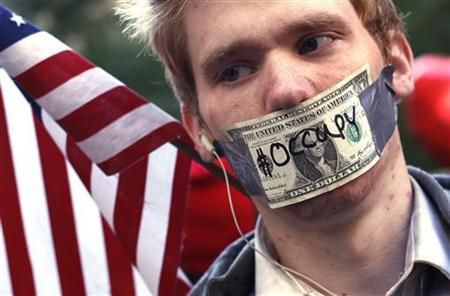Occupy Wall Street: 10 Things to Know, One Month Later

Occupy Wall Street hit the one-month mark Oct. 17, and there is no end in sight for the now global protests.
Demonstrators have hunkered down at Zuccotti Park in New York City, despite previous threats to remove the protesters so that the park can be cleaned.
What began as a social media whisper has turned into a global outcry. Hundreds of thousands of individuals have demonstrated across the world against big bank bailouts. The protesters say they represent the 99 percent of people who are fed up with corporate excess and greed.
But what are the solid facts about Occupy Wall Street up until now? What do they want? Where is this movement going?
Here are 10 things you need to know one month later.
1. Demonstrations have cost taxpayers in New York City $3.2 million so far in overtime costs for police officers whose duty it is to monitor the protests.
2. The movement has spread on a global scale. People have protested in 950 cities in 82 countries worldwide.
3. The Occupy Wall Street movement boasts donations of close to $300,000 and a warehouse full of supplies for those living in Zuccotti Park.
4. The Occupy Wall Street group has had no concrete list of cohesive demands, though there's a compilation of 13 demands strung together on its Web site. These include various unrelated things like free college education, open border migration, and immediate across the board debt forgiveness for all.
5. North Korea recently voiced its opinion on Occupy Wall Street, saying that the demonstration shows people are fed up with capitalism, that the system has no future, and that it's proud of its socialist culture built on science and will.
6. Forbes' David Marris took a survey with a sample group of 50 protestors - or five percent of the total protestors in New York City - and found that 54 percent don't believe the Obama stimulus program was a good idea. A majority of 70 percent expect the protest to end in a dramatic fashion, similar to Greece; while 11 percent think weather and fatigue will cause it to dwindle.
7. Millions of cyberchatter is shared each day from tweets, to Facebook posts, to texts about the movement. This is how Occupy Wall Street became Occupy Boston and Atlanta and London and so on. Social media trends can divulge the movement's secrets as well. The next plan is supposed to be a Nov 5. call to action. Individuals are being urged to transfer their money from large financial institutions, to small, local banks and credit unions on that day.
8. Henry Blodget, a former Wall Street analyst who is now CEO and Editor-in-Chief of Business Insider, believes that the Occupy Wall Streeters have very legitimate gripes. His detailed analysis of unemployment and average workers' salaries compared to Wall Street salaries has yielded almost four million hits thus far.
9. A Vancouver-based magazine called Adbusters planted the seed of Occupy Wall Street (or simply #Occupy) that has since sprouted into a revolution. In July, the magazine printed a centerfold poster advocating that individuals who felt slighted and disillusioned should go occupy Wall Street. Adbusters is an advertisement-free magazine that has been promoting anticonsumerism activism since 1989.
10. Celebrity supporters of the demonstrations include: Lupe Fiasco, Michael Moore, Russell Simmons, and Susan Sarandon. Public figures that condemn the movement include: Eric Cantor and Rush Limbaugh.
© Copyright IBTimes 2024. All rights reserved.





















